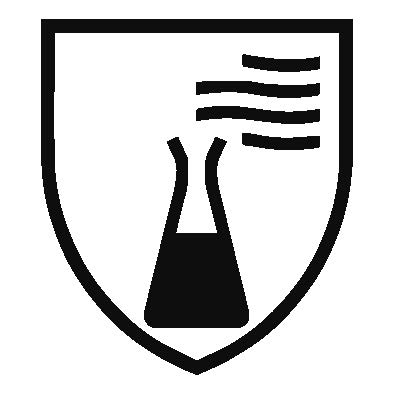Tricopren 723
Hersteller:
Außenmaterial:
Polychloropren (Neopren, CR)
Innenmaterial:
Polychloropren (Neopren, CR)
Innenausführung:
Baumwolltrikot
Profilierung:
Handfläche mit Profil
Schichtstärke:
1,10 mm bis 1,50 mm
Gesamtlänge:
290 mm bis 310 mm
Allergene:
1,3-Diphenylguanidin, Thioharnstoffe
Hand- und Hautschutzplan
Sie können den Schutzhandschuh hier in Ihren Hand- und Hautschutzplan übernehmen.
| Gefahrstoff | Durchbruchzeit bei 23 Grad Celsius |
|---|---|
| 1-Methoxy-2-propanol / Propylenglykol-1-methylether | >30min |
| 1-Methoxy-2-propylacetat / Propylenglykol-1-methylether-2-acetat / MPA | >10min |
| 2-Propanol / IPA / Isopropanol / Isopropylalkohol | >240min |
| 4-Hydroxy-4-methyl-2-pentanon / Diacetonalkohol | >60min |
| Aceton | >10min |
| Butylacetat / Essigsäurebutylester | >10min |
| Cyclohexan | >10min |
| Dipropylenglycolmonomethylether (Isomerengemisch) / Dipropylenglykolmethylether | >10min |
| Ethanol / Ethylalkohol | >60min |
| Ethylacetat / Essigsäureethylester | >10min |
| Kohlenwasserstoffe (aliphatisches KW-Gemisch) | >30min |
| Methanol | >30min |
| Methylethylketon / Butanon / MEK | >10min |
| Toluol | >10min |
| n-Heptan | >10min |
| Testgegenstand | Wertebereich | Testergebnis |
|---|---|---|
| Abriebfestigkeit | 1 (gering) bis 4 (hoch) | 2 |
| Schnittfestigkeit (Coup-Test) | 1 (gering) bis 5 (hoch) | 1 |
| Weiterreissfestigkeit | 1 (gering) bis 4 (hoch) | 2 |
| Durchstichfestigkeit | 1 (gering) bis 4 (hoch) | 1 |
Buchstabe X steht für "nicht geprüft" oder "Test nicht anwendbar".
Schutzfunktionen des Handschuhs
EN ISO 374-1 / Typ B (3 Prüfchemikalien)

AKL
Schutzhandschuhe gegen Chemikalien
EN 388

2121
Schutz gegen mechanische Risiken
